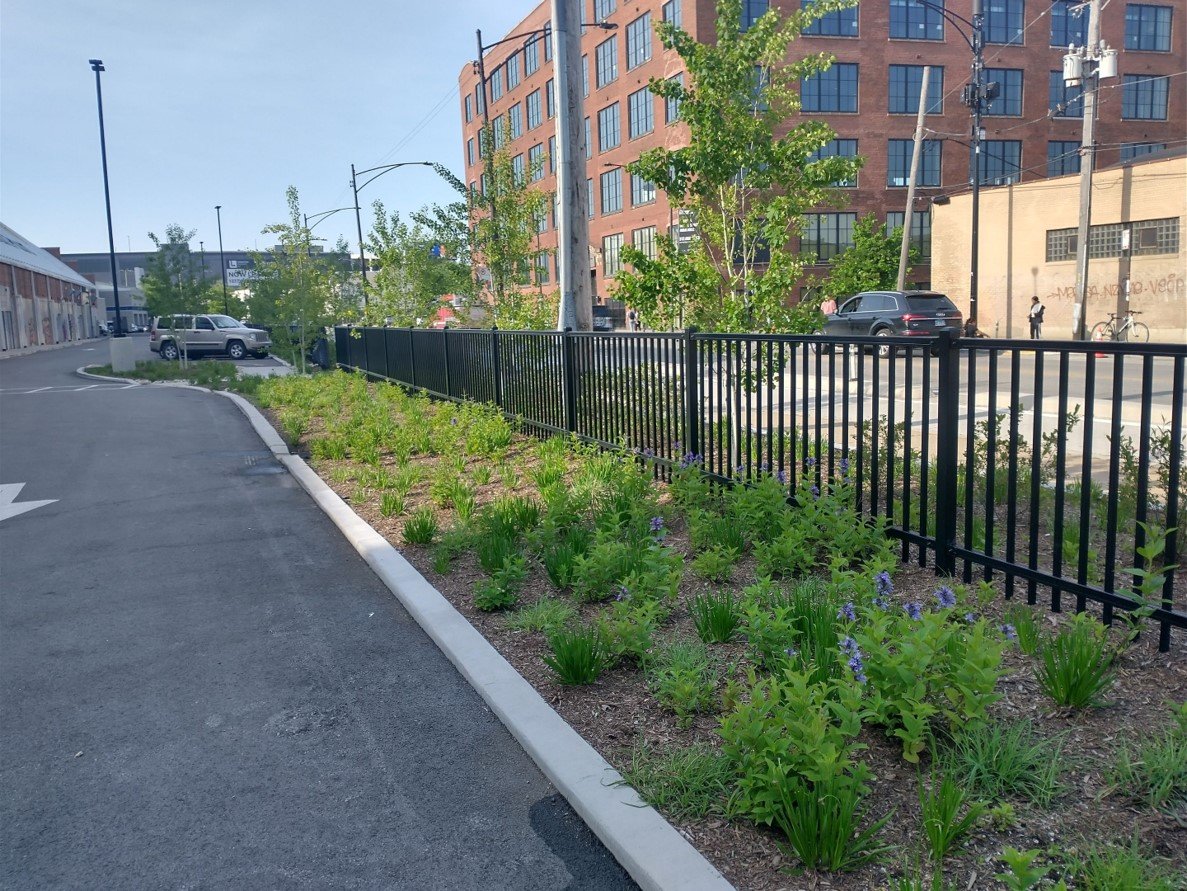The Salt Shed
The iconic Morton Salt warehouse has been a recognizable landmark for Chicago residents and visitors for nearly a century. Unbeknownst to the average concertgoer, The Salt Shed’s planting soils are entirely comprised of Omni Infinity Media, which proved to be the essential solution to economically redevelop this brownfield and manage the 4-acre site’s stormwater.
All of the site’s stormwater runoff is directed to bioinfiltration areas comprised of Omni Infinity Media before discharging from the site. While typical prepared soil has 25% pore space, Omni Infinity Media has 77.7-85.0% porosity. By using Omni Infinity Media, there was no need for any disturbance of the existing cap or the underlying contaminated soils.
Omni Infinity Media on this project:
Coverage Area: 10,076 sf
Depth: varies 6” to 72”
Stormwater Storage: >19,968 cf
Installation Complete:
2022 - Chicago River side
2023 - Elston Ave side
Key Takeaways:
Significant project cost savings
No hauling off of situ contaminated soils
All required stormwater volume via bioinfiltration
Easily provided TACO Tier 1 compliant test results
Project Data:
Location: Chicago, IL
Type:
New Construction
Open SpaceTeam:
Developers: R2 Properties & Blue Star Properties
Architect: Lamar Johnson Collaborative
Civil Engineer: V3 Companies
Landscape Architect: Greenprint PartnersAwards:
ILASLA Merit Award, Landscape Architectural Research, 2022Morton Salt’s former warehouse moves closer to redevelopment
Chicago’s iconic Morton Salt building poised for redevelopment
Morton Salt warehouse redevelopment plans include office, entertainment space along Chicago River
Chicago River entertainment, offices planned for Morton Salt redevelopment
Developers want to turn the old Morton Salt warehouse into the “Salt District”
















